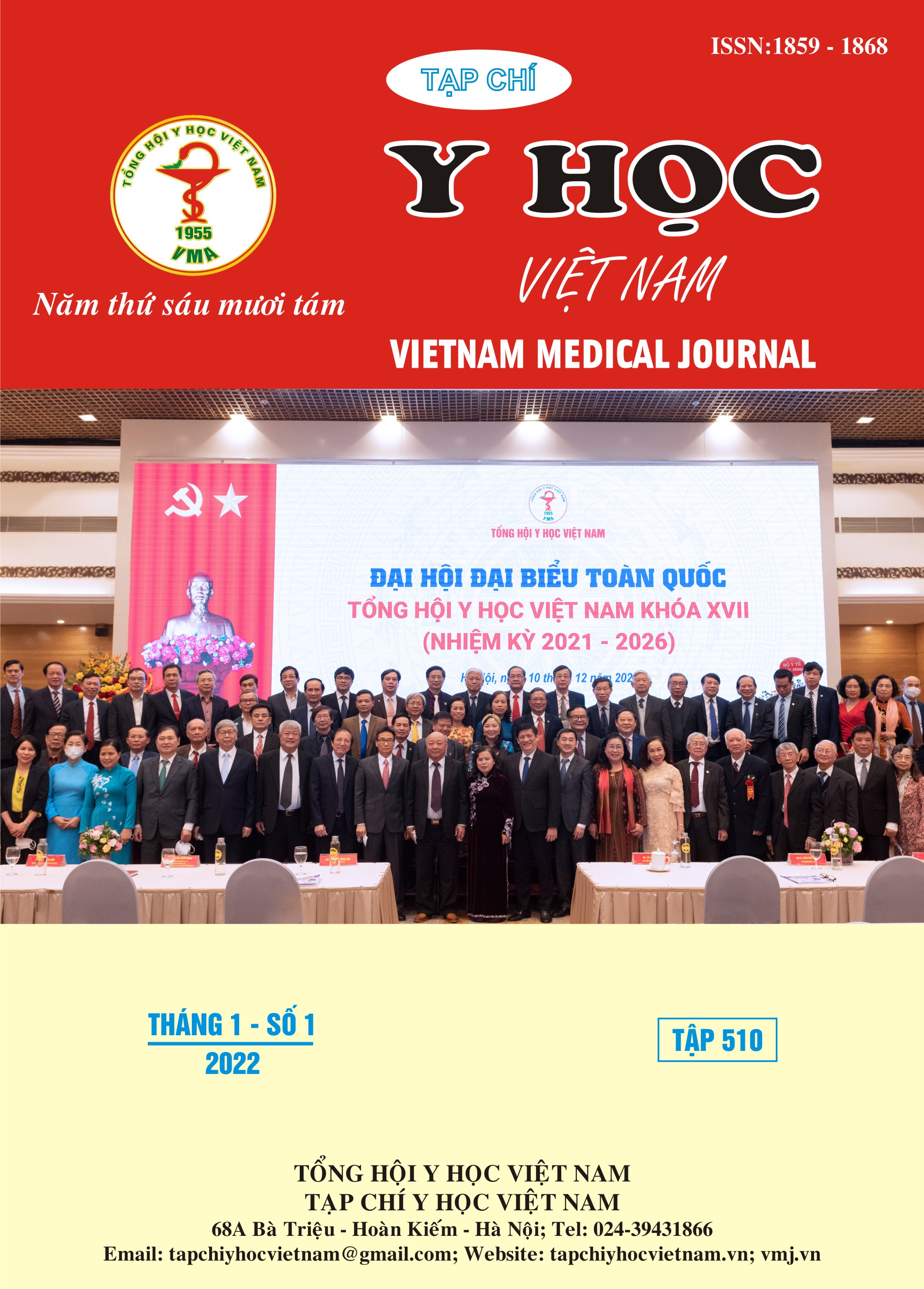THE CLINICAL OUTCOME OF ONE BLASTOCYST TRANSFER THROUGH TIMELAPSE TECHNIQUE AT ART CENTER, VINMEC TIMES CITY HOSPITAL
Main Article Content
Abstract
Objective: Analysis of the association between abnormal morphokinetics of early embryos and clinical outcomes. Materials and Methods: the study conducted on 88 frozen embryo transfer cycles, with only 1 blastocyst. Blastocysts were made from ICSI cycles and cultured by timelapse system. Patients were evaluated for pregnancy outcomes by βhcg testing on day 14 post-embryo transfer and follow-up ultrasound until the ongoing pregnancy, at 10 weeks. Results: the βhcg (+) rate, the clinical pregnancy rate, the ongoing pregnancy rate were 62,5%, 55,7%, 51,1% respectively. The pregnancy rate of the group without abnormality in division were higher than that in the group with abnormality at 2 stages of division, the βhcg (+) rate (67% vs 51%), the clinical pregnancy rate (61% vs 41%), and the ongoing rate (56% vs 37%), the difference is no significant. There was no case of pregnancy after embryo transfer with vaculation in blasomere. Conclusion: embryos that did not appear abnormal division during the early stage of development will have a better pregnancy outcome than embryos with abnormalities present twice. However, studies with larger sample sizes are needed to obtain more reliable results.
Article Details
References
2. Capalbo A, Hoffmann ER, Cimadomo D, Maria Ubaldi F, Rienzi L. Human female meiosis revised: new insights into the mechanisms of chromosome segregation and aneuploidies from advanced genomics and time-lapse imaging. Hum Reprod Update (2017) 23(6).
3. Franasiak JM, Forman EJ, Hong KH, Werner MD, Upham KM, Treff NR, et al. The nature of aneuploidy with increasing age of the female partner: a review of 15,169 consecutive trophectoderm biopsies evaluated with comprehensive chromosomal screening. Fertil Steril (2014) 101:656–63.
4. Nayar K. D., Gahlot R., Kant G., Singh M., Sharma N. Is time lapse a better option to improve clinical outcome over standard incubator- a case controlled study. ASRM 2018.
5. Nelson SM, Lawlor DA. Predicting live birth, preterm delivery, and low birth weight in infants born from in vitro fertilisation: a prospective study of 144,018 treatment cycles. PLoS Med (2011) 8.


